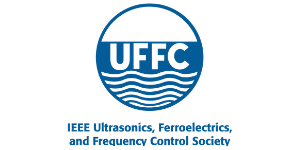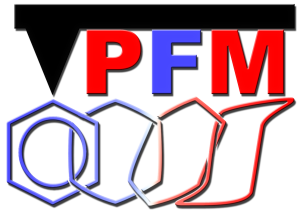TUTORIAL DAY - MONDAY, JUNE 27
NOTE: Tutorials will take place at Université de Tours.
Fundamentals of piezo-response force microscopy: from basic concepts to the state-of-the-art
In our age of electronics and electronic materials, much state-of-the-art research focuses on ferroelectrics, materials that display permanent internal electric fields. One driving force behind this research is the diverse range of potential applications. Ferroelectrics provide opportunities to both enhance existing technology (such as computer memory, capacitors, sensors, optical devices etc) but also to provide next generation applications, like biomedical implants, neuromorphic memories, negative capacitance devices, and domain wall nanoelectronics. For most of these applications, control and knowledge of the orientation of the ferroelectric polarisation vector is critical, with several experimental techniques to image the polarisation now established. Over the last two decades, piezo-response force microscopy (PFM) has emerged as, arguably, the most prolific tool for imaging these microstructures. This success is partly because of its nanoscale resolutions, straightforward implementation on most scanning probe microscopy setups, the ability to image both bulk and thin film sample surfaces in ambient conditions, and minimal sample preparation requirements. Despite this proliferation of the PFM technique, and the relative ease with which domain maps can be obtained, interpretation of the data is seldom straightforward.
This tutorial aims to help the participants develop an intuitive understanding of what PFM is, how to use it, and how to optimise it for the collection and interpretation of high-quality images. To achieve this, we will start by building an understanding of what ferro-, piezo and pyro- electrics are, using a cartoon material system made up of a few atoms, to illustrate the key concepts. Before discussing how PFM can detect the polarisation vectors in these systems, and the operational principles it uses to make these maps. From these basic concepts, we will move towards the latest research in the field, including how the principles of PFM can be leveraged to image non-polar materials. The tutorial will finish with methodologies and tips on practical PFM usage, best practices, and pitfalls to be avoided. To foster the participants’ understanding, this tutorial aims to be interactive.
Fundamentals of Ferroelectric and Multiferroic Materials
Ferroelectric materials are crystals that exhibit spontaneous electric polarizations, which can be switched by an external electric field, below their Curie temperatures. Because of the lack of center of symmetry, they are also piezoelectric where applied stress to the crystal produces electric charges and applied electric field generates strain. Ferroelectricity was first discovered in Rochell salt in 1920. But research activity in the field only took off when perovskite oxide BaTiO3 was found to be ferroelectric in the 1940s. Since then, perovskite ferroelectrics have been widely used in transducers and actuators because of their excellent piezoelectric property. Non-volatile ferroelectric memory that makes use of their spontaneous polarization was also developed.
In this tutorial, I will introduce the fundamentals of ferroelectricity, including the basic theory, properties and characterization techniques, as well as applications of ferroelectric materials. During the past 20 years, the field has been greatly enriched by the study of multiferroic materials, in which two or more ferroic orders (ferroelectric, ferromagnetic, ferroelastic and ferrotoroidic) coexist. At present, researchers have focused mostly on multiferroics that possess spontaneous electric and magnetic orders simultaneously, and antiferromagnetism is often included. The coupling between the two order parameters enables electric-field-control of magnetism, which is particular attractive for low-power spintronics. I will also discuss the unique properties and potential applications of multiferroic materials.
Fundamentals of Flexoelectricity
The generation of polarization under mechanical stress or, conversely, the generation of deformation in response to a voltage, are a traditional preserve of ferroelectric and piezoelectric materials. Piezoelectricity, however, is not the only electromechanical property of materials. Flexoelectricity, the coupling between polarization and strain gradients, is increasingly being recognized as a very important, sometimes even dominant, electromechanical property.
Contrary to piezoelectricity, flexoelectricity is symmetry-allowed in all materials, including of course ferroelectrics, but also centrosymmetric materials. It turns out also that this property even exists in semiconductors and photovoltaic materials, metals, and biomaterials. It is thus truly universal. Moreover, because strain gradients tend to grow in inverse proportion to physical size, flexoelectricity can be the dominant electromechanical coupling at the nanoscale. Additionally, when it coexists with other functional properties (piezoelectricity in ferroelectrics, photovoltaic effects in semiconductors), it generates new functional properties that would not be possible without such coexistence. Understanding flexoelectricity is therefore important and potentially useful if we manage to harness these new flexoelectrically-induced functionalities.
The present tutorial will attempt to give a complete overview of flexoelectricity, from its definition and physical principles, to its effect on different materials and the consequences for devices. At every step of the way, the working principles will be illustrated with examples. The aim is to provide a good foundation for those who are new or curious about flexoelectricity, and perhaps also to inspire new directions of research for those who already primed about it.
Application of Piezoresponse Force Microscopy in Liquid
While not widely implemented, there are several factors which motivate extending piezoresponse force microscopy (PFM) implementation to liquid environments. For example, liquid PFM may allow piezoelectric biomaterials to be investigated in physiological environments, thereby providing a characterization approach to understand the possible biofunctional relevance of piezoelectricity in a wide range of biomaterials, in principle down to the single molecule level. Moreover, given the potential use of ferroelectrics and other functional oxides in microfluidics and energy storage applications, which exploit the presence of polarization charge and screening mechanisms, it would be useful to be able to locally probe domain-dependent electromechanics, electromechanics, and surface potentials at the solid-liquid interface.
Imaging in liquid also provides a potential route for simultaneously minimizing capillary forces present in ambient air conditions, as well as the influence of long-range electrostatic forces on PFM data, localizing the electromechanical detection to the tip-sample contact. On the other hand, stray fields, solution conductivity, and damped cantilever oscillations may impede the application of PFM in liquid.
In this tutorial, the implementation of liquid PFM will be discussed. Reported results on domain imaging and switching of ferroelectric1-4 and organic5-8 materials will be presented. As well as the development and use of shielded probes.9,10 Importantly, the challenges in performing measurements and in interpreting the data, as well as possible future directions will be explored.
References 1 B. J. Rodriguez, S. Jesse, A. P. Baddorf, and S. V. Kalinin, Phys. Rev. Lett. 96, 237602 (2006). 2 B. J. Rodriguez, S. Jesse, A. P. Baddorf, S.-H. Kim, and S. V. Kalinin, Phys. Rev. Lett. 98, 247603 (2007). 3 N. Balke, S. Jesse, Y.-H. Chu, and S. V. Kalinin, ACS Nano 6, 5559-5565 (2012). 4 N. Balke, A. Tselev, T. M. Arruda, S. Jesse, Y.-H. Chu, and S. V. Kalinin, ACS Nano 6, 10139-10146 (2012). 5 S. V. Kalinin, B. J. Rodriguez, S. Jesse, K. Seal, R. Proksch, S. Hohlbauch, I. Revenko, G. L. Thompson, and A. A. Vertegel, Nanotechnology 18, 424020 (2007). 6 M. P. Nikiforov, G. L. Thompson, V. V. Reukov, S. Jesse, S. Guo, B. J. Rodriguez, K. Seal, A. A. Vertegel, and S. V. Kalinin, ACS Nano 4, 689-698 (2010). 7 G. L. Thompson, V. V. Reukov, M. P. Nikiforov, S. Jesse, S. V. Kalinin, and A. A. Vertegel, Nanotechnology 23, 245705 (2012). 8 M. P. Nikiforov, V. V. Reukov, G. L. Thompson, A. A. Vertegel, S. Guo, S. V. Kalinin, and S. Jesse, Nanotechnology 20, 405708 (2009). 9 B. J. Rodriguez, S. Jesse, K. Seal, A. P. Baddorf, S. V. Kalinin, and P. D. Rack, Appl. Phys. Lett. 91, 093130 (2007). 10 J. H. Noh, M. Nikiforov, S. V. Kalinin, A. A. Vertegel, and P. D. Rack, Nanotechnology 21, 365302 (2010).
Applications of Piezoelectric Materials
Piezoelectric materials are used in a wide variety of applications, timing standards, filters, transducers, actuators, sensors, and energy harvesters, pyroelectrics. This tutorial will discuss key applications of piezoelectric materials, and the structure-property relationships that govern the choice of specific materials. Emphasis will be placed on the use of perovskite and wurtzite compounds for piezoelectric applications, including both lead-based and lead-free piezoelectric ceramics, single crystals, and films. The tutorial will conclude with an introduction to piezoelectric microelectromechanical systems (piezoMEMS).
Piezoelectric materials for biomedical applications
Piezoelectric materials are commonly used as sensors and actuators, for energy harvesting and vibration control in many industrial and every-day devices. They have established themselves as well in the medical device market as core components in e.g. ultrasound applications and for surgical tools. For in vivo applications, however, piezoelectric materials have not made the jump into clinical usage yet, even though they could enable localized pressure sensing, energy harvesting from muscle motion or stimulation of tissue re-generation after surgery. The main challenge here is that they have to be biocompatible. This is a concept that goes way beyond simple chemical toxicity, but covers all aspects that influence the safe performance of a material at the implant site under the complex conditions that the body imposes.
In this tutorial, we will take an in-depth look at the applicability and biocompatibility of piezoelectric materials for in vivo biomedical applications. We will investigate the boundary conditions that the body imposes on implant materials in different applications and how these might impact the functionality and stability of piezoelectric implants. And vice versa we will look into the influence of material properties, such as surface topography, chemical composition and mechanical properties, on the living system. Based on this, we will discuss future application areas for this versatile class of materials in the biomedical realm.
Ferroelectrics & Photovoltaics
Two years after the invention of modern solar cells, it was found that a ferroelectric material, BaTiO3, exhibits a photovoltaic effect distinct from that of p-n junctions, later called the bulk photovoltaic (BPV) effect. Under uniform illumination, a homogeneous ferroelectric material gives rise to a current under zero bias, i.e. short-circuit current (ISC), that depends on the polarization state of the incident light, and produces an anomalously large photo-voltage well exceeding the bandgap energy. The effect has been largely forgotten , the entire field of photo-ferroelectrics has been revitalized by the reports of abnormal photovoltaic effect in BiFeO3 (BFO)[i], which is a ferroelectric/multiferroic material with one of the lowest band gap and significant semiconducting properties.
The present tutorial will discuss the basics of the photovoltaic effect in both semiconductors and ferroelectrics along with the electronic origin and phenomenological theory of the BPV. We will present the associated effects such as the role of ferroelectric domain walls and photoelectric active sub-band gap levels in the abnormal PVE in BFO as well as persistent photoconductivity.[ii]
We will also address the tip-enhanced photovoltaic effect and how light can induce reversible switching of ferroelectric polarization at room temperature in BiFeO3 thin films.[iii] Other effects based on light interaction with the ferroelectrics such as photostriction, photorefractive effects or light-enhanced piezoelectric coefficient will also be presented.
Finally, we will discuss the interaction of strain field and gradients with matter how the BPV effect into a universal photovoltaic effect. namely flexo-photovoltaic effect, allowed in all semiconductors.[iv]
References
[i] Yang, S. Y. et al. Above-bandgap voltages from ferroelectric photovoltaic devices. Nature Nanotechnology 5, 143–147 (2010)
[ii] Yang, M., Bhatnagar, A. & Alexe, M. Electronic Origin and Tailoring of Photovoltaic Effect in BiFeO3 Single Crystals. Adv. Electron. Mater. 1, 1500139 (2015).
[iii] Alexe, M. & Hesse, D. Tip-enhanced photovoltaic effects in bismuth ferrite. Nature Communications 2, 256 (2011).
[iv] Yang, M., Kim, D.J, & Alexe, M., Flexo-Photovoltaic Effect, Science 360, 904 (2018).
Theory and Simulations of Ferroelectrics and Related Materials
In this tutorial I will introduce the theoretical and simulation methods most frequently employed to investigate ferroelectrics and related materials (polar dielectrics, antiferroelectrics, multiferroics). I will start from the general electronic-structure methods that permit predictive calculations at the atomic scale, and introduce successive simplifications to eventually reach continuum field schemes that give us access to the mesoscale. I will illustrate the specificity and usefulness of the different approaches by presenting, for each of them, one or two classic examples of application. In passing, this will allow me to emphasize the key role that simulation has played in our field, and to touch upon interesting physical properties of these materials.
Jorge Íñiguez’s work on ferroelectrics and related materials is mainly funded by the Luxembourg National Research Fund, currently through projects FNR/C18/MS/12705883/REFOX/Gonzalez, INTER/RCUK/18/12601980 and INTER/NWO/20/15079143.
Epitaxy of ferroelectric oxide thin films
Oxide films with a thickness of just a few atoms can now be grown with a precision matching that of semiconductors. This opens up a whole world of functional device concepts and fascinating phenomena that would not occur in the expanded bulk crystal. Particularly interesting phenomena occur in films showing magnetic or electric order or, even better, both of these (“multiferroics”). Here, I will focus on epitaxy. After a brief introduction to the concept of the epitaxial deposition, I will discuss the growth modes and growth processes involved. The major deposition techniques will be described as well as the main characterization tools to assess the epitaxial nature of oxide thin films. Because of the strong lattice polarization coupling in ferroelectrics, epitaxy is a great tool to engineer polarization in thin films. Epitaxial strain, chemical control on interface atomic termination and charge screening environment tuning are key elements of the ferroelectric domain design. In the ultrathin regime however, the dominating effect of the depolarizing field leads to a suppression of the thin film functionality, i. e. the ferroelectric polarization. Here, I will present such effect and the physics of ultrathin regime and discuss routes towards robust polarization states in the ultrathin form. Furthermore, because most ferroelectric materials are deposited in their ferroelectric phase, in-situ monitoring of polarization is possible. I will present the state of the art dealing with such a capacity and demonstrate how in-situ tracking of ferroelectricity can advance the integration of such functional materials into nanoscale devices.
Two-Dimensional Ferroelectrics: Recent Developments and Future Trends
Advances in fabrication of atomically thin structures coupled with progress in their structural and functional characterization by electron and local probe techniques as well as theoretical modeling led to a strong progress in understanding of the finite-size effects in ferroelectrics. Recent theoretical predictions and experimental demonstration of ferroelectricity in van der Waals materials present exciting possibilities for development of the two-dimensional (2D) ferroelectric semiconducting materials with high mobility, small bandgap and polarization-controlled transport properties for application in scalable low-power advanced electronic devices. This lecture will review the emergence of the stable room-temperature polar ordering in 2D van der Waals materials related to different mechanisms such as structural distortion, intralayer covalent bonding, ionic displacement and surface chemical functionalization. It will be followed by discussion of recent progress in experimental studies of 2D ferroelectric materials by various characterization methods. Novel device concepts based on 2D semiconductor/ferroelectric heterostructures and their applications in modern nanoelectronics devices, such as nonvolatile memories, negative capacitance transistors, neuromorphic structures, and reconfigurable nanodevices will be reviewed. Finally, an outlook for future trends and challenges in 2D ferroelectrics will be presented.
Antiferroelectrics: principles and properties
This tutorial will focus on the physics of antiferroelectric materials. We’ll start by considering the definition of antiferroelectricity in analogy to the definition of ferroelectricity. We will develop a theoretical framework for describing the crystal structures and energy landscape in terms of lattice modes of a high-symmetry reference structure, using space group formalism, Landau expansions, and first-principles calculations of phonon dispersion and total energies. We will learn about electric field switching of antiferroelectrics, which will directly lead into an overview of their functional properties, including piezoelectric, electro-optic and electrocaloric effects associated with switching between the antipolar and polar states, and the resulting technological applications. Throughout, we will illustrate and reinforce the essential concepts by looking at prototypical antiferroelectric materials, including PbZrO3, AgNbO3, Sm:BiFeO3 and thin-film ZrO2, reviewing first-principles studies and experimental synthesis and characterization. We will discuss the design and discovery of new antiferroelectric materials using crystallographic databases, high-throughput first-principles calculations, and data mining. Finally, we will consider the place of antiferroelectrics in the broader context of functional electric-field-switchable polar materials.





















